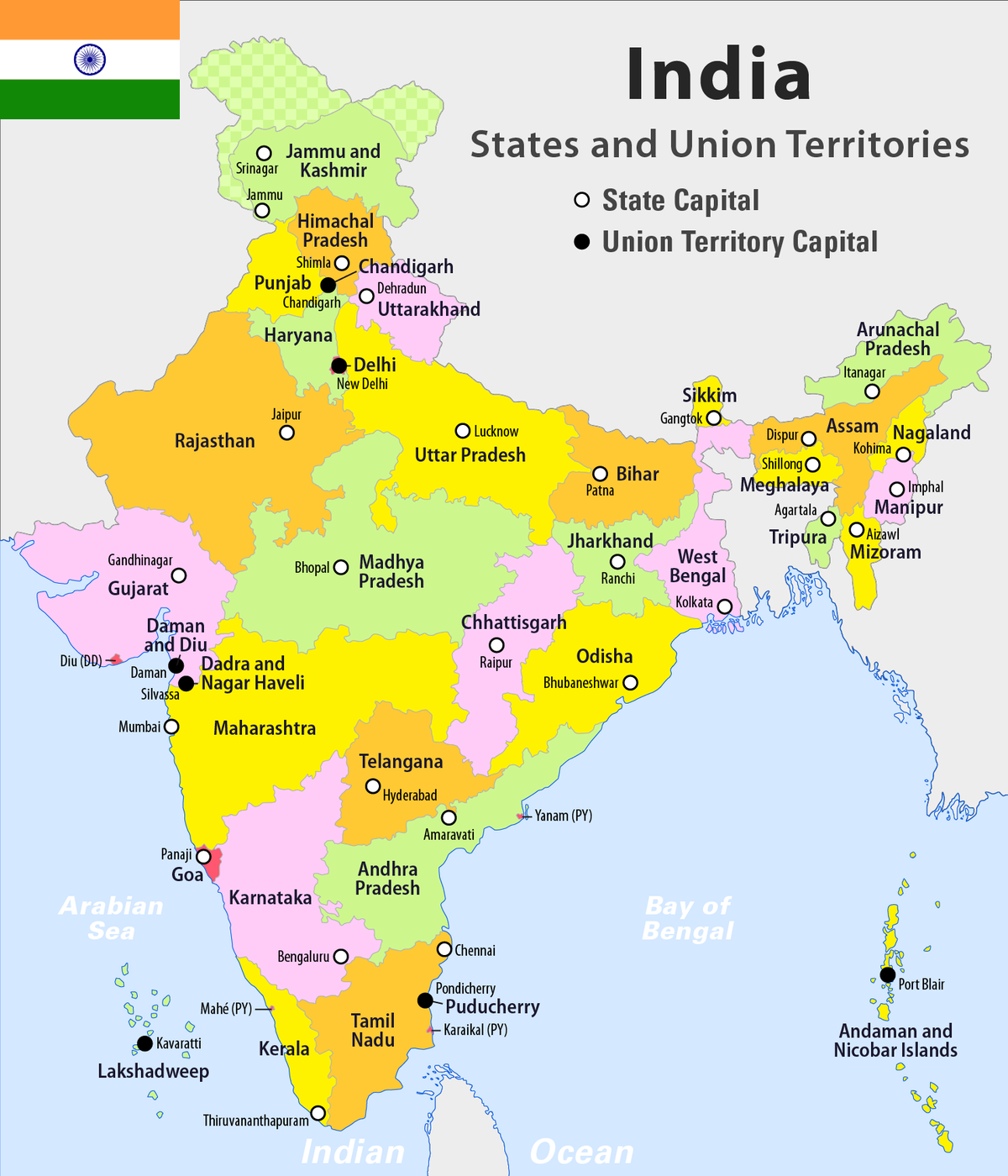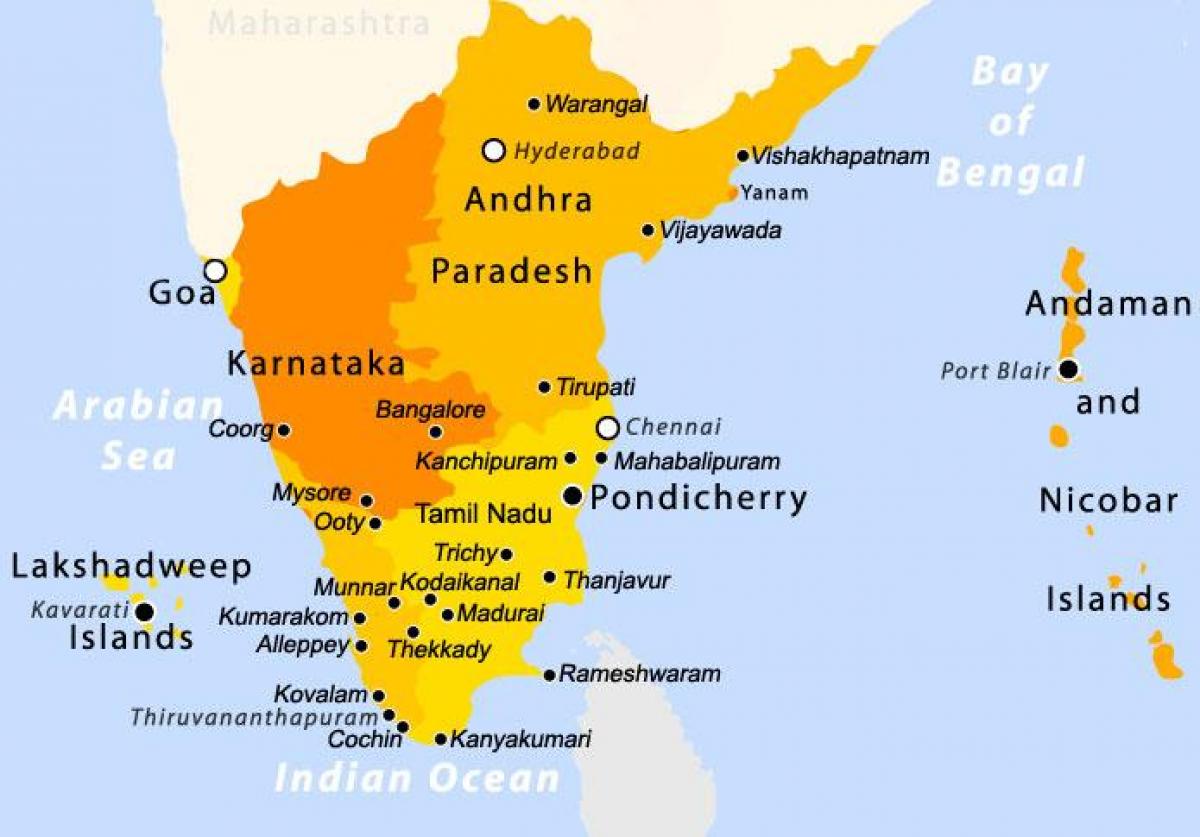

This is Pushparaj Speaking...view
|
  |
Main articles: Presidencies and provinces of British India, Agencies of British India, Residencies of British India, and Princely state The Indian subcontinent has been ruled by many different ethnic groups throughout its history, each instituting their own policies of administrative division in the region. The British Raj mostly retained the administrative structure of the preceding Mughal Empire. India was divided into provinces (also called Presidencies), directly governed by the British, and princely states, which were nominally controlled by a local prince or raja loyal to the British Empire, which held de facto sovereignty (suzerainty) over the princely states.
Main articles: Goa liberation movement, Andhra movement, Annexation of Dadra and Nagar Haveli, and States Reorganisation Commission Andhra State was created on 1 October 1953 from the Telugu-speaking northern districts of Madras State. The French enclave of Chandernagore was transferred to West Bengal in 1954. In the same year Pondicherry, comprising the former French enclaves of Pondichéry, Karikal, Yanaon and Mahé, was transferred to India; this became a union territory in 1962. Also in 1954, pro-India forces liberated the Portuguese-held enclaves of Dadrá and Nagar Aveli, declaring the short-lived de facto state of Free Dadra and Nagar Haveli. In 1961, India annexed it as the Union Territory of Dadra and Nagar Haveli. The States Reorganisation Act, 1956 reorganised the states based on linguistic lines resulting in the creation of the new states. As a result of this act: Madras State retained its name, with Kanyakumari district added to form Travancore–Cochin. Andhra Pradesh was created with the merger of Andhra State with the Telugu-speaking districts of Hyderabad State in 1956. Kerala was created by merging Malabar district and the Kasaragod taluk of South Canara districts of Madras State with Travancore–Cochin. Mysore State was re-organized with the addition of the districts of Bellary and South Canara (excluding Kasaragod taluk) and the Kollegal taluk of Coimbatore district from the Madras State, the districts of Belgaum, Bijapur, North Canara and Dharwad from Bombay State, the Kannada-majority districts of Bidar, Raichur and Kalaburagi from Hyderabad State and the Coorg State. The Laccadive Islands, Aminidivi Islands and Minicoy Island, which had been divided between the South Canara and Malabar districts of Madras State, were united and organised into the union territory of Lakshadweep. Bombay State was enlarged by the addition of Saurashtra State and Kutch State, the Marathi-speaking districts of Nagpur division of Madhya Pradesh and the Marathwada region of Hyderabad State. Rajasthan and Punjab gained territories from Ajmer State and Patiala and East Punjab States Union respectively and certain territories of Bihar were transferred to West Bengal.
|



|
Three major methods were used for the construction of ancient Indian forts. The first consisted of earthen ramparts. Often they were constructed of the sand which was dug out of the ditch surrounding the fort. The second of rubble with earth on the outside which was more sturdy. The third type of construction was with stone and masonry work. The last was the strongest. Often materials from demolished forts were reused in the building of new forts. By 4th Century BCE, fortified cities were common in India. The largest ones were between the city of Mathura (on the Yamuna river) and Magadha (on the Ganges). Another series of forts in the south, was on the Ujjain (on the Narmada) leading into the Deccan. These are inferred by the remains of fort walls and bastions seen on excavation at Rajagriha and at several sites in the Gangetic plain notably Kaushambi. At the latter site huge walls of burnt brick, which look like they have been battered. There are few descriptions of these ancient structures. The most noted is the one by Megasthenes, an ambassador of Seleucus I Nicator to the court of Chandragupta Maurya. He describes Pataliputra as being guarded by a ditch with wooden walls. The fort had 570 towers and 54 gates with colonnaded halls decorated with gold and silver. One such hall has been excavated and is one of the oldest stone structures in India.
Though most of the structures have been decayed and are lost, India's legacy of ancient forts is seen mostly in the shastras (ancient Indian treatises) and in the reliefs on stupas. On some of the early relief work, the carvings indicate that ancient Indian forts has crenellations, embrasures and sloping walls. The Arthashastra the Indian treatise on military strategy describes six major types of forts differentiated by their major mode of defense: Jala-durga (Water fort) Antardvipa-durga (island fortress): surrounded by natural (sea or river) water bodies. E.g. Murud-Janjira. Sthala-durga (plain fortress): surrounded by artificial moats or irrigated by a river e.g. Deeg Fort, Lohagarh Fort. Dhanvana- or Maru-durga (Desert Fort): Surrounded by an arid area of at least 5 yojanas (73 km). Giri-durga (Hill fort) Prantara-durga: Located on a flat hill summit. E.g. medieval forts such as Chittor, Gwalior and Ranthambore. Giri-parshva-durga: The fortifications and civilian structures extend down to the hill slope (not just the summit). Guha-durga: Located in a valley surrounded by hills, where the outposts and the signal towers are located. Vana-durga (Forest fort): Surrounded by a dense forest over a distance of at least 4 kroshas (14.6 km). Khanjana-durga, built on a fen surrounded by thorny forests. Sthambha-durga, built in the forest among tall trees; lacks sufficient water sources. Mahi-durga (Earthen fort) Mrid-durga: surrounded by earthen walls Parigha-durga: Surrounded by earthen walls, as well as stone or brick walls. The walls are at least 5.4 m high and their width is half of their height. Panka-durga: Surrounded by fens or quicksand Nri-durga (Human fort) Defended by a large number of loyal and experienced warriors. Usually a city fortress, populated by a substantial garrison. Each of these types had its own advantages and disadvantages. For example, according to the Manusmṛti, the forest fort suffers from monkey attacks, the earthen forts get swarmed with rodents, the water forts were plagued by diseases etc. The Manusmṛti considers the Hill fort to be the best defensive structure. Some Sanskrit text consider hill forts to be the abode of gods and hence auspicious. The Mahabharata describes the Human fort as the most effective fortification.